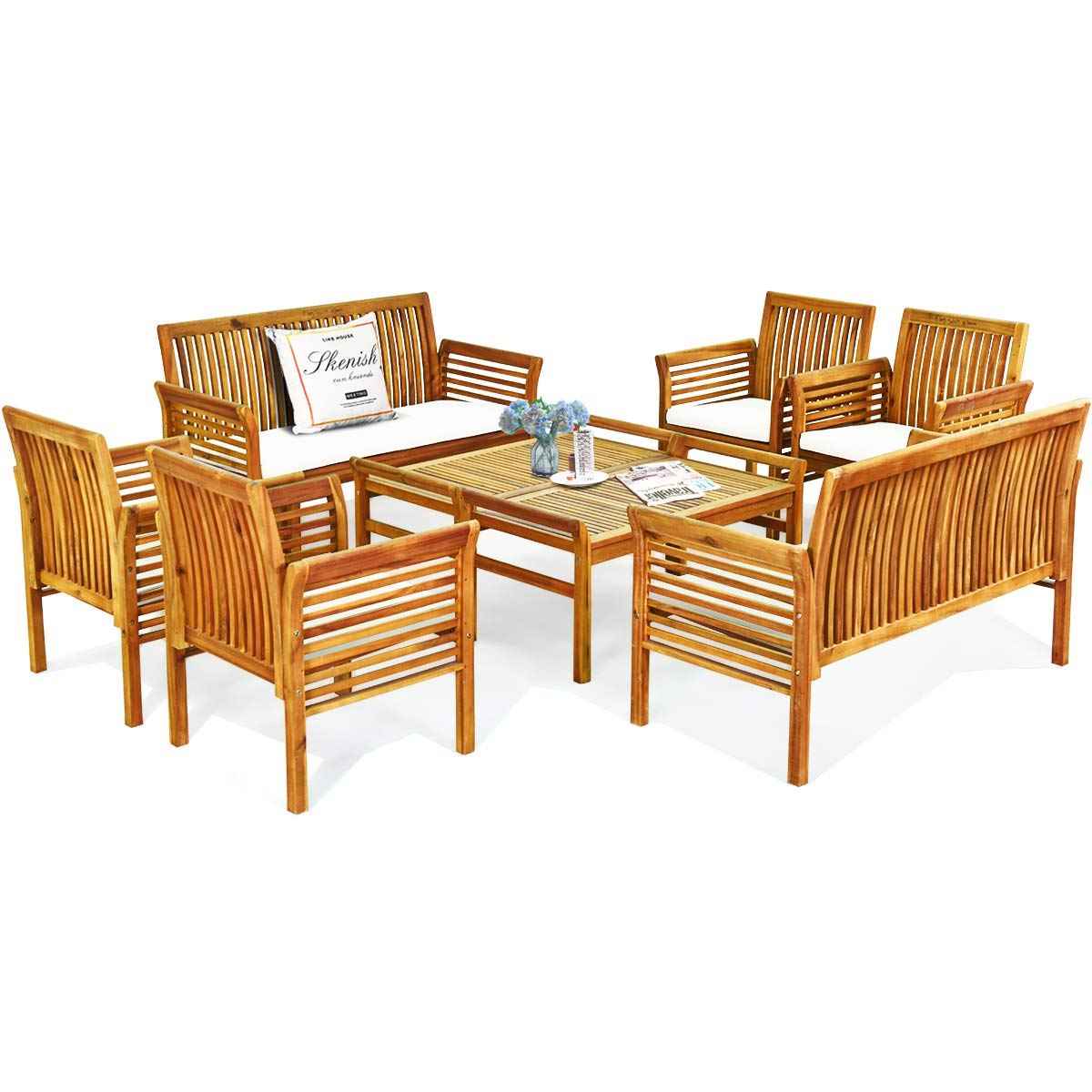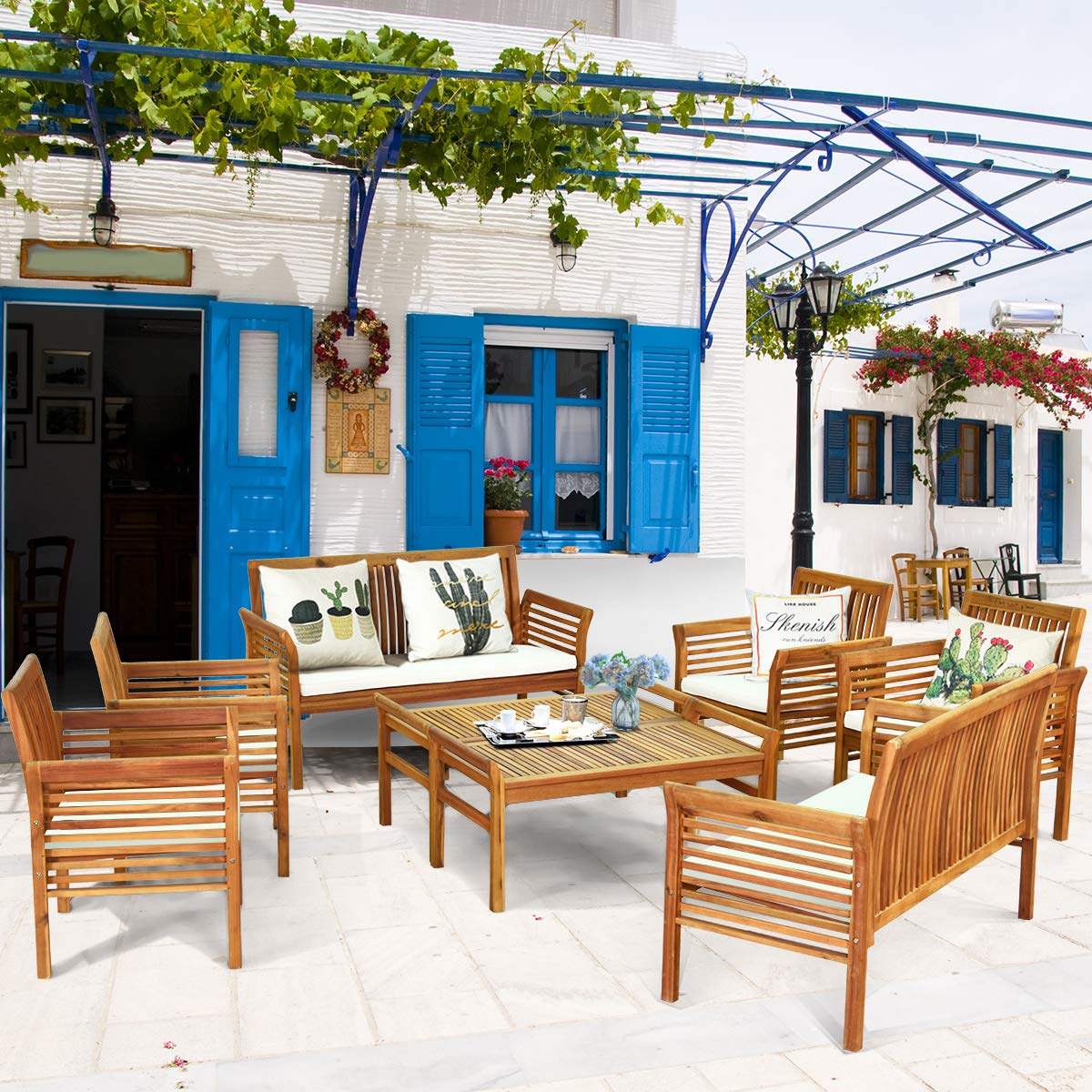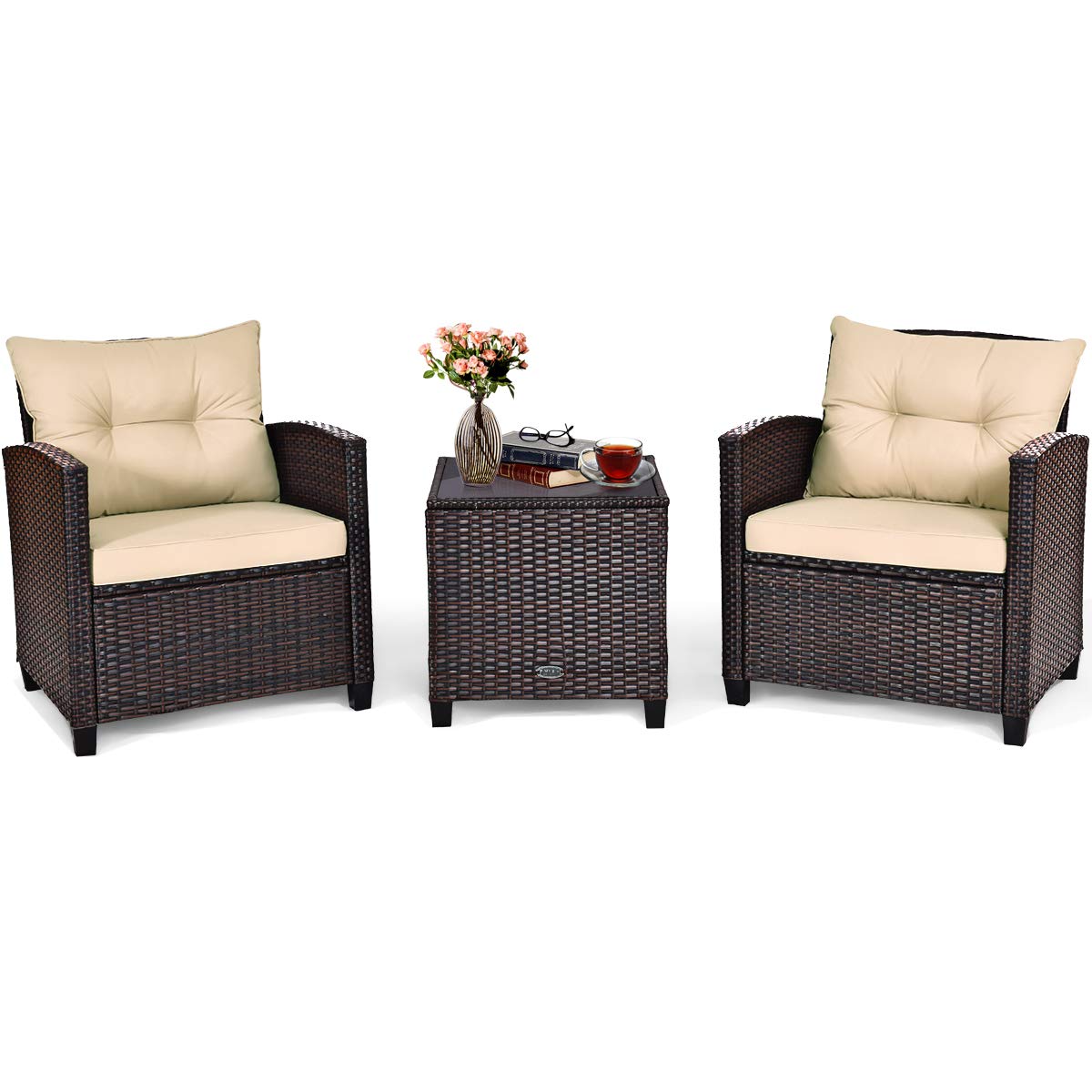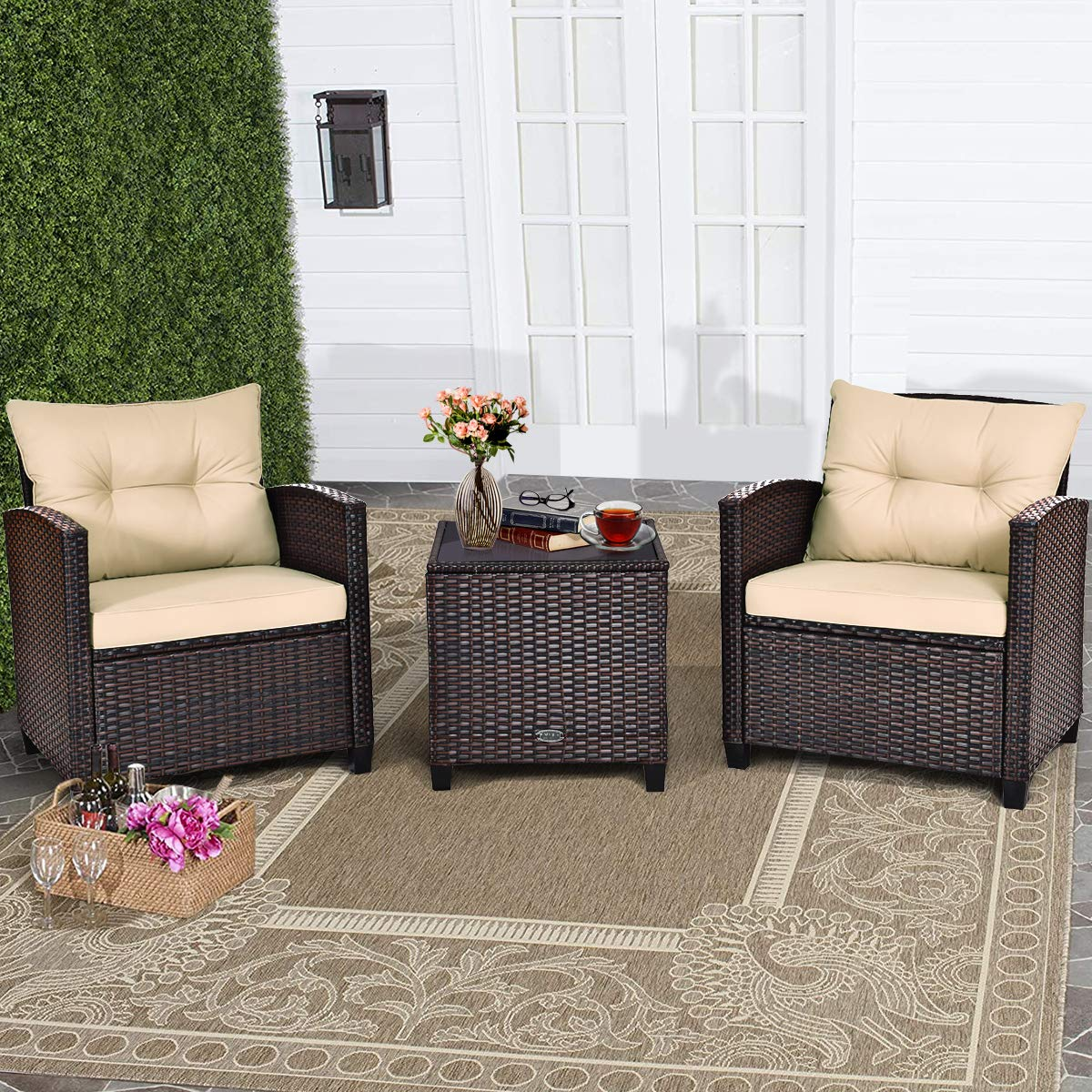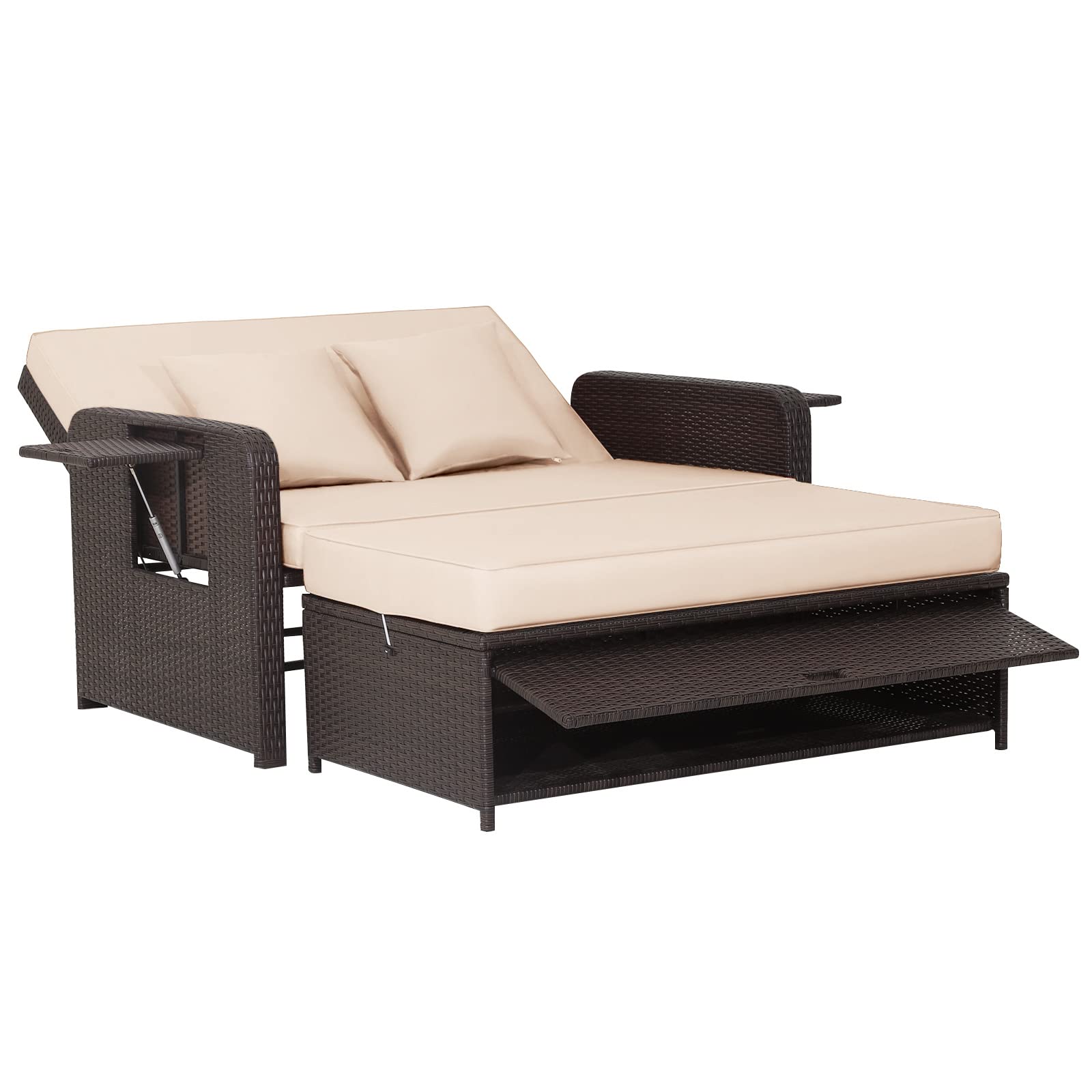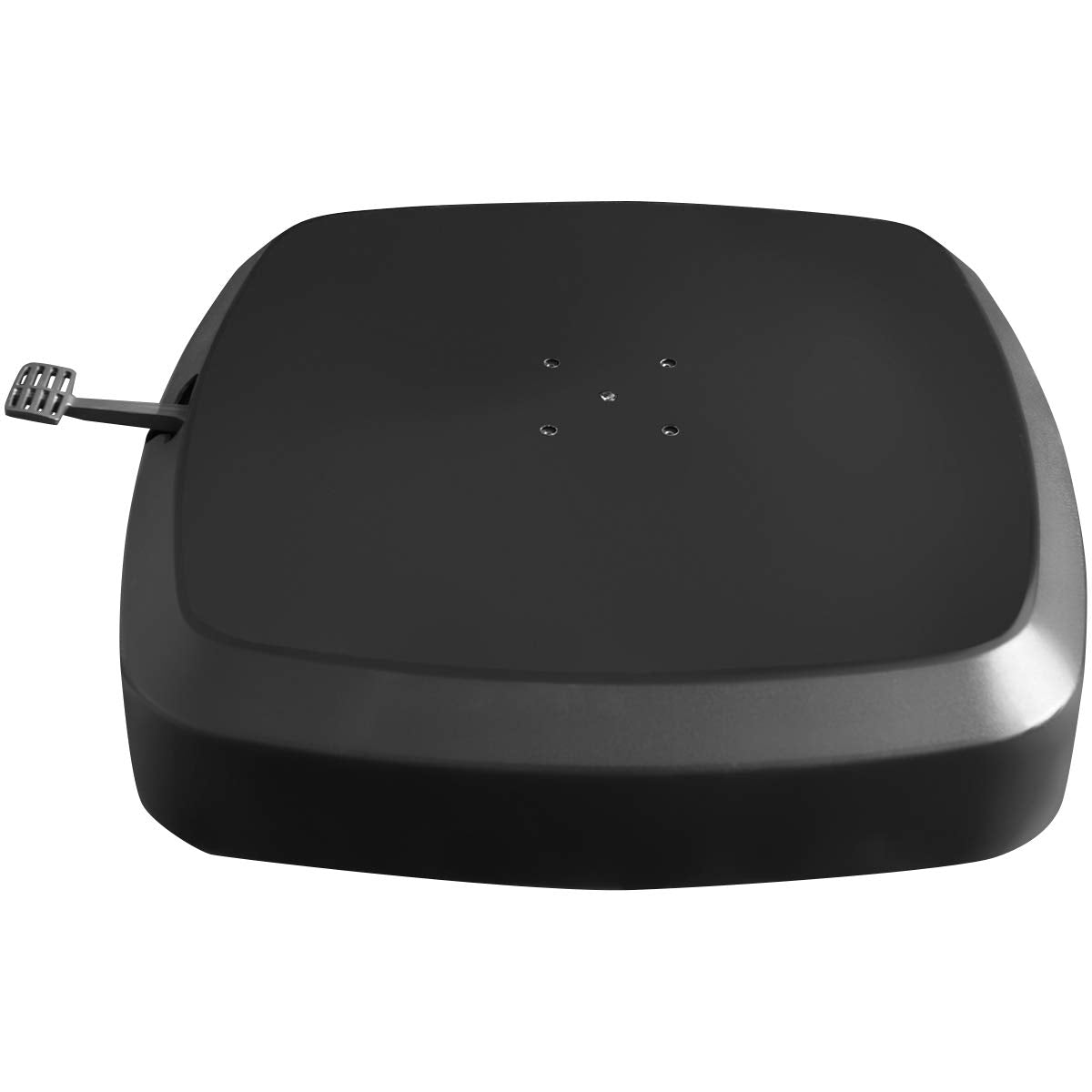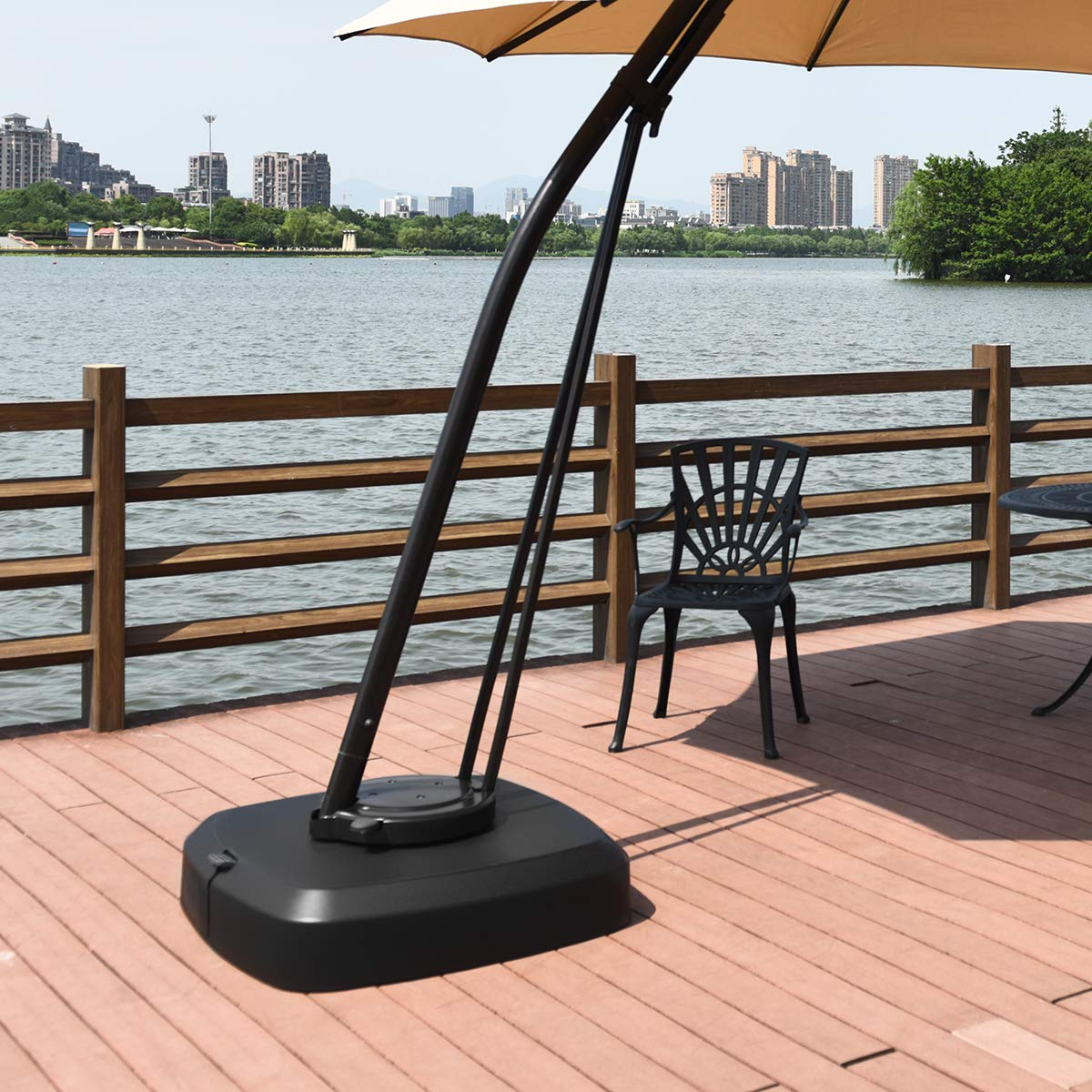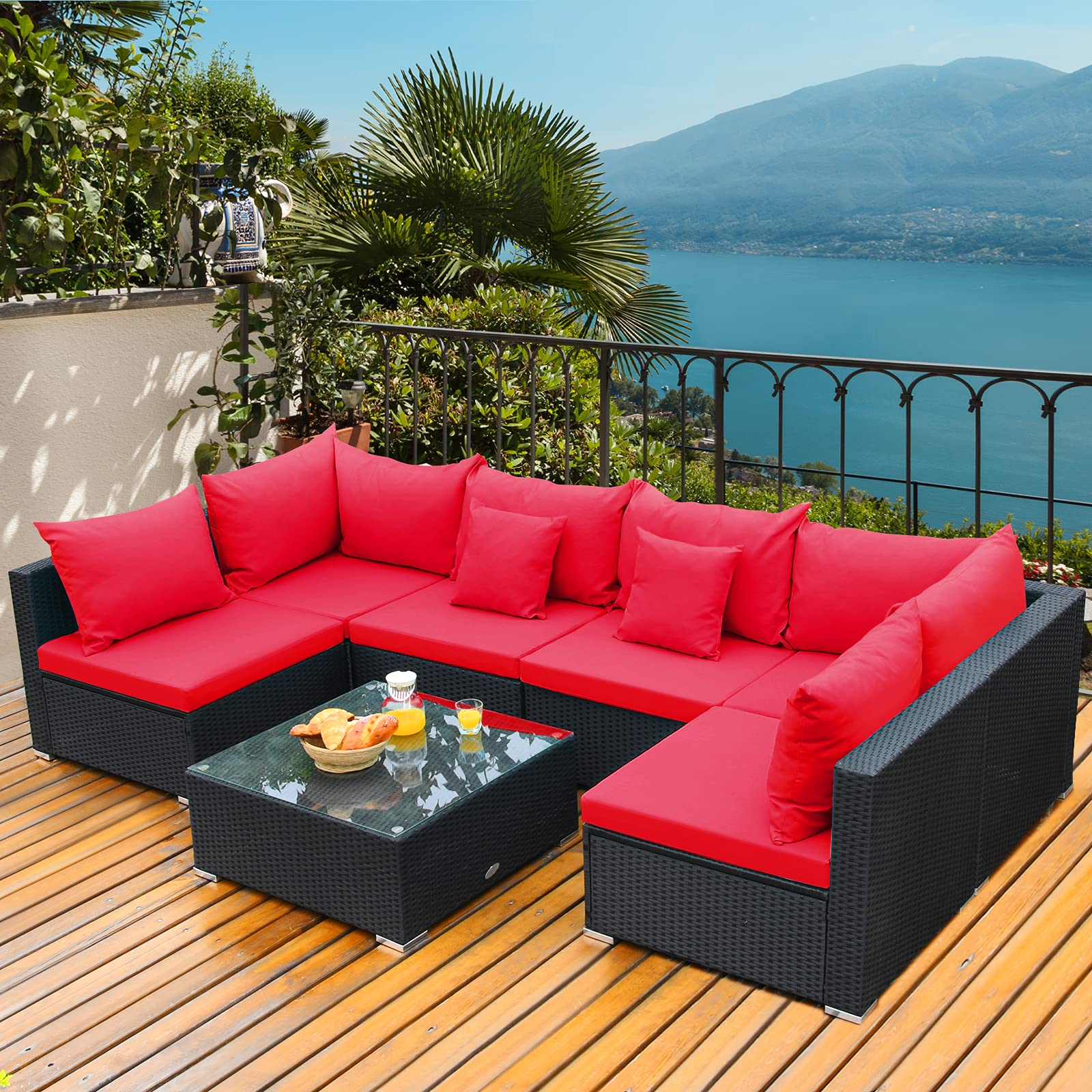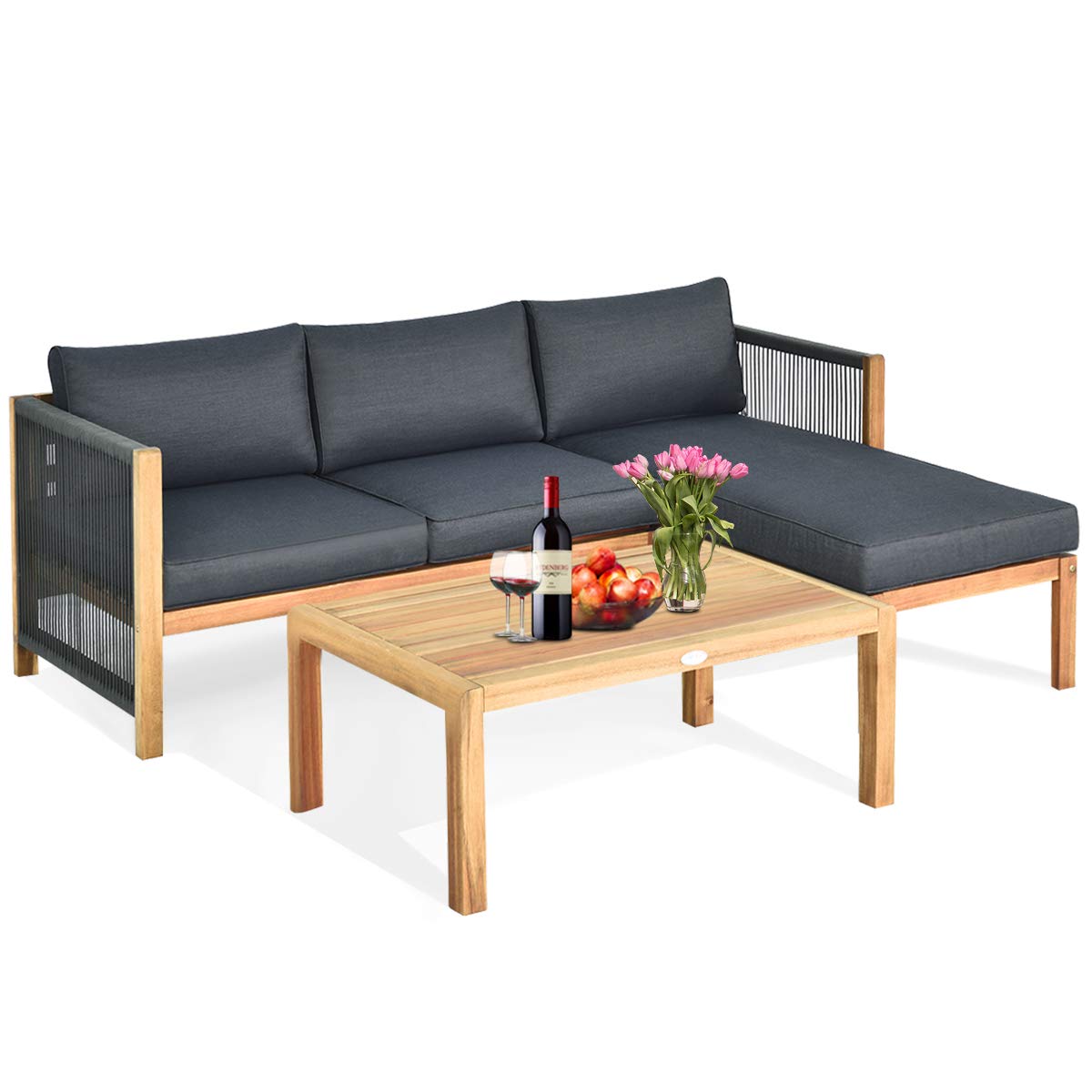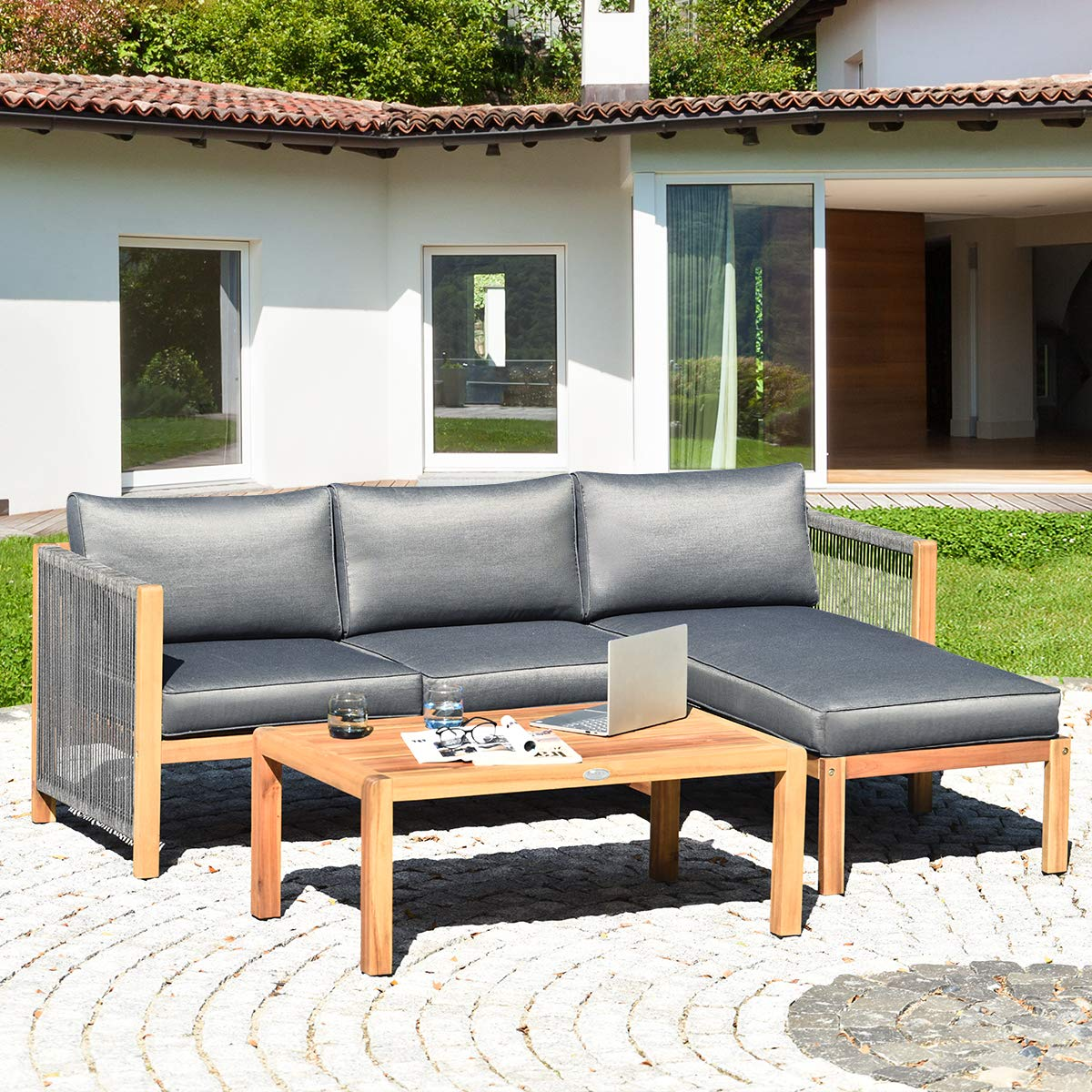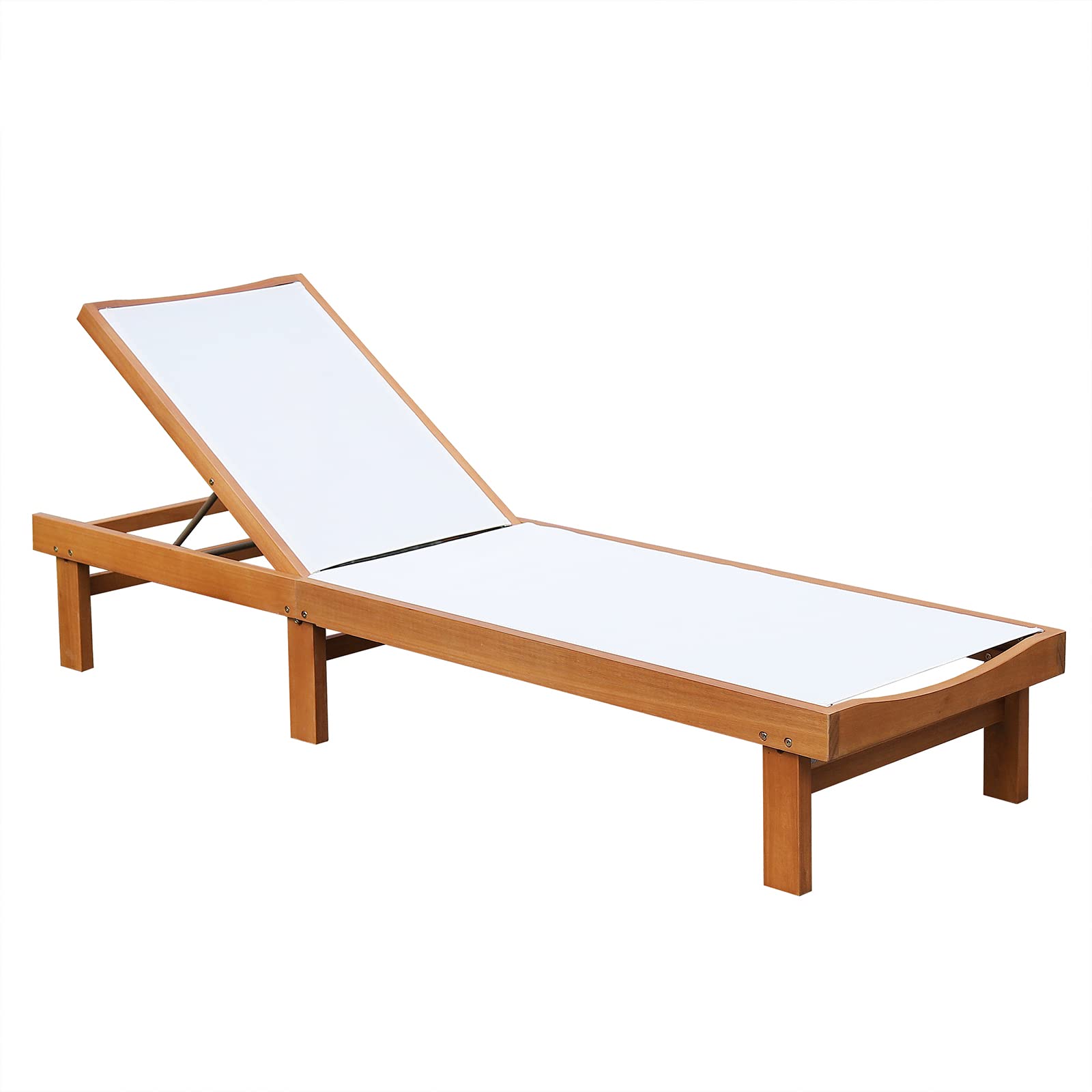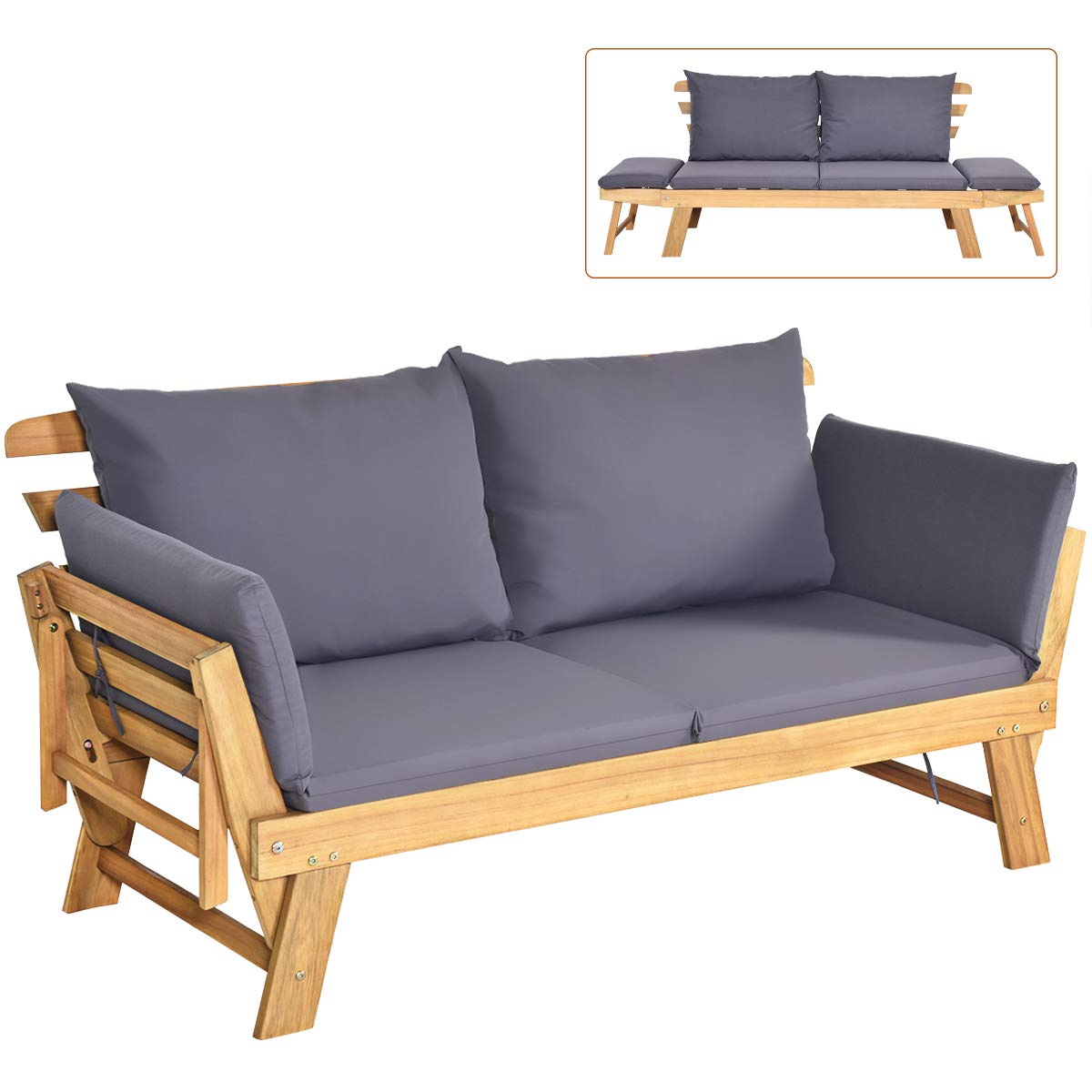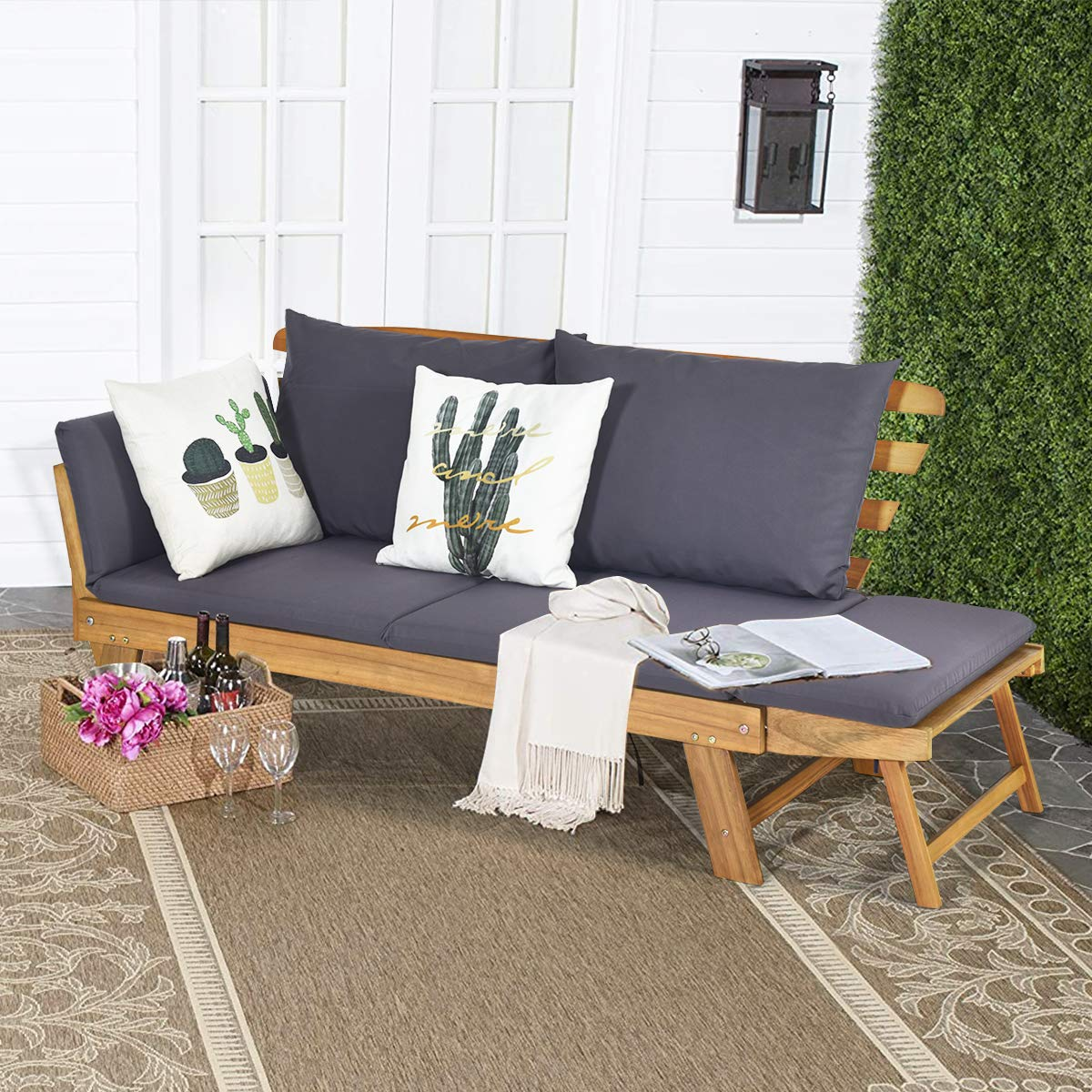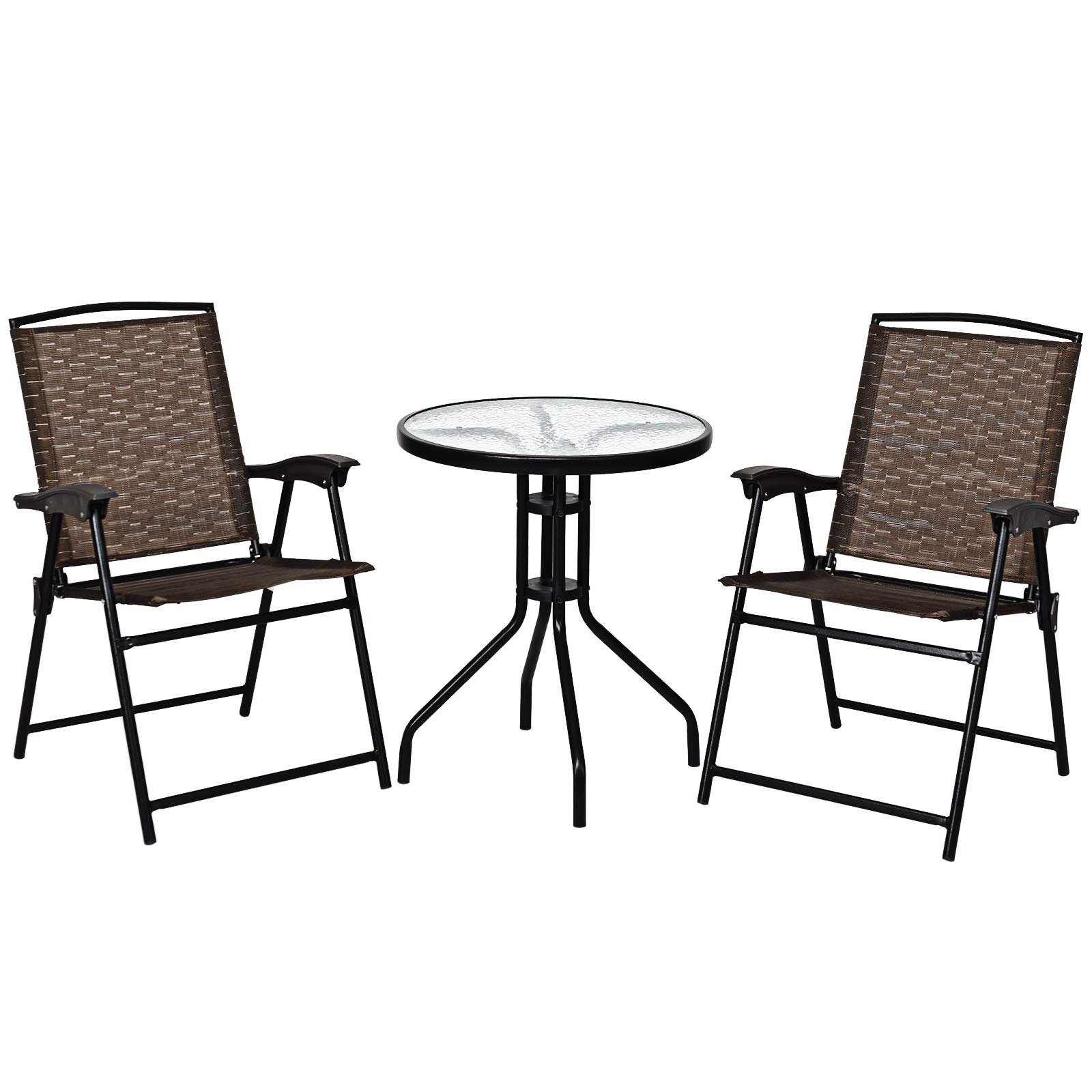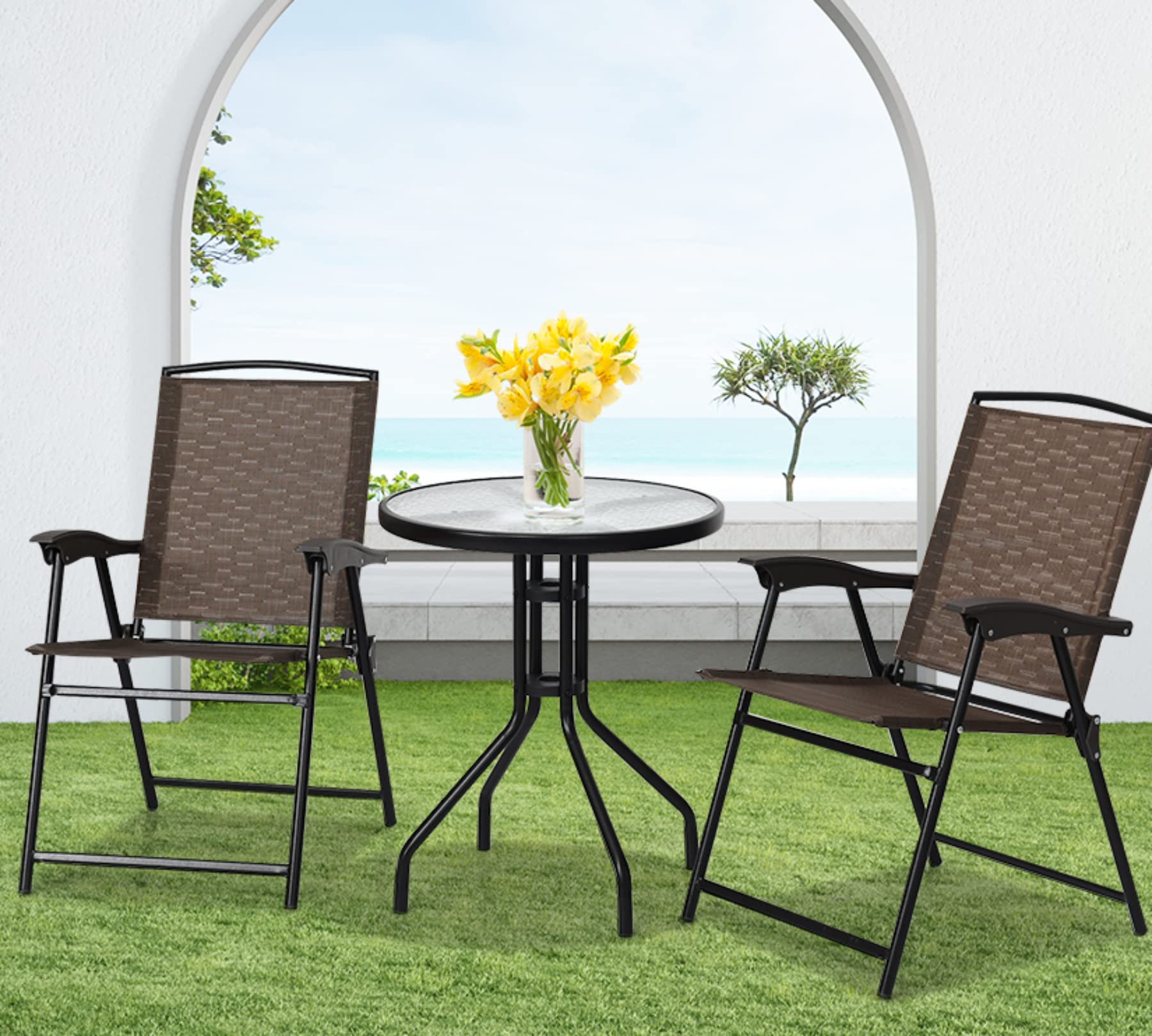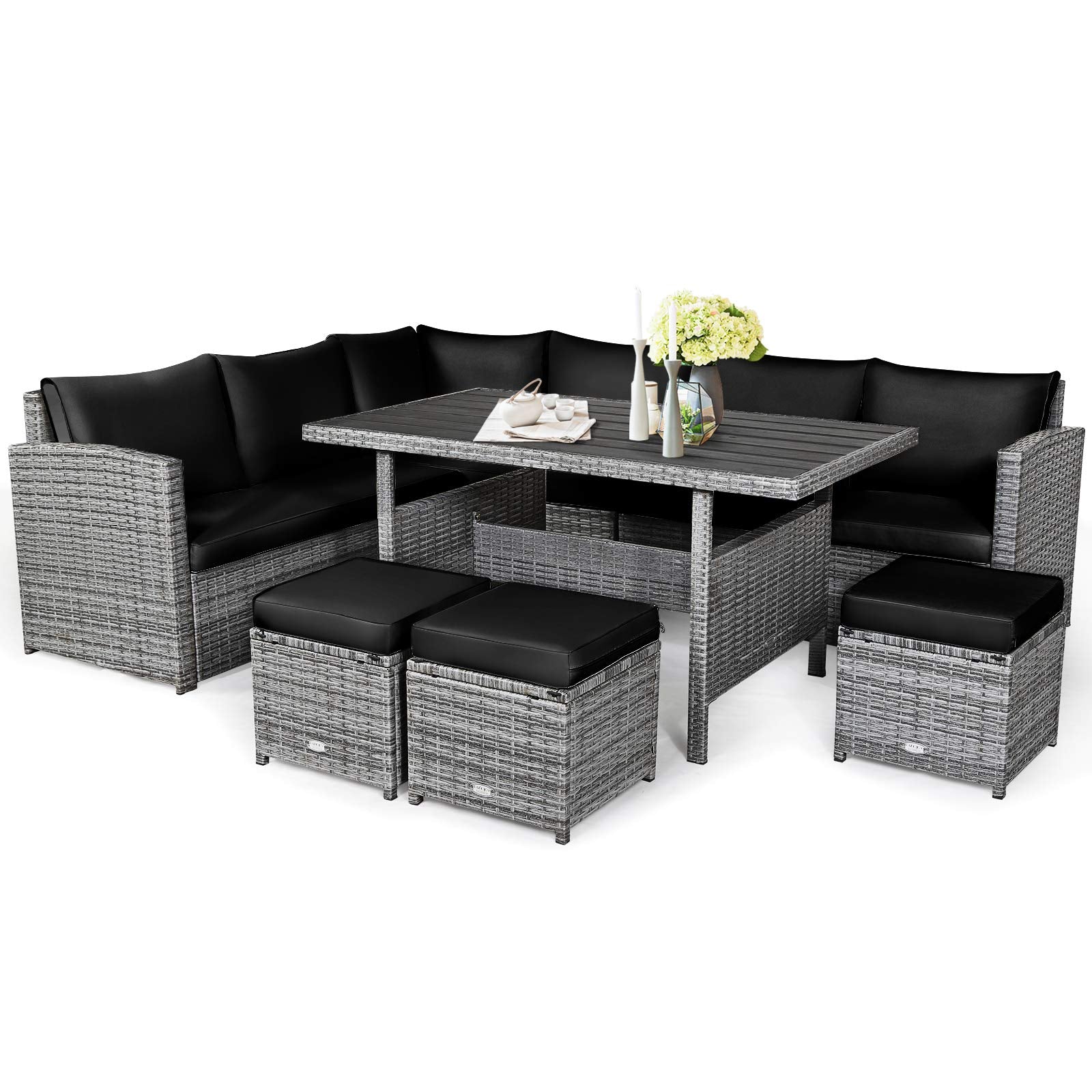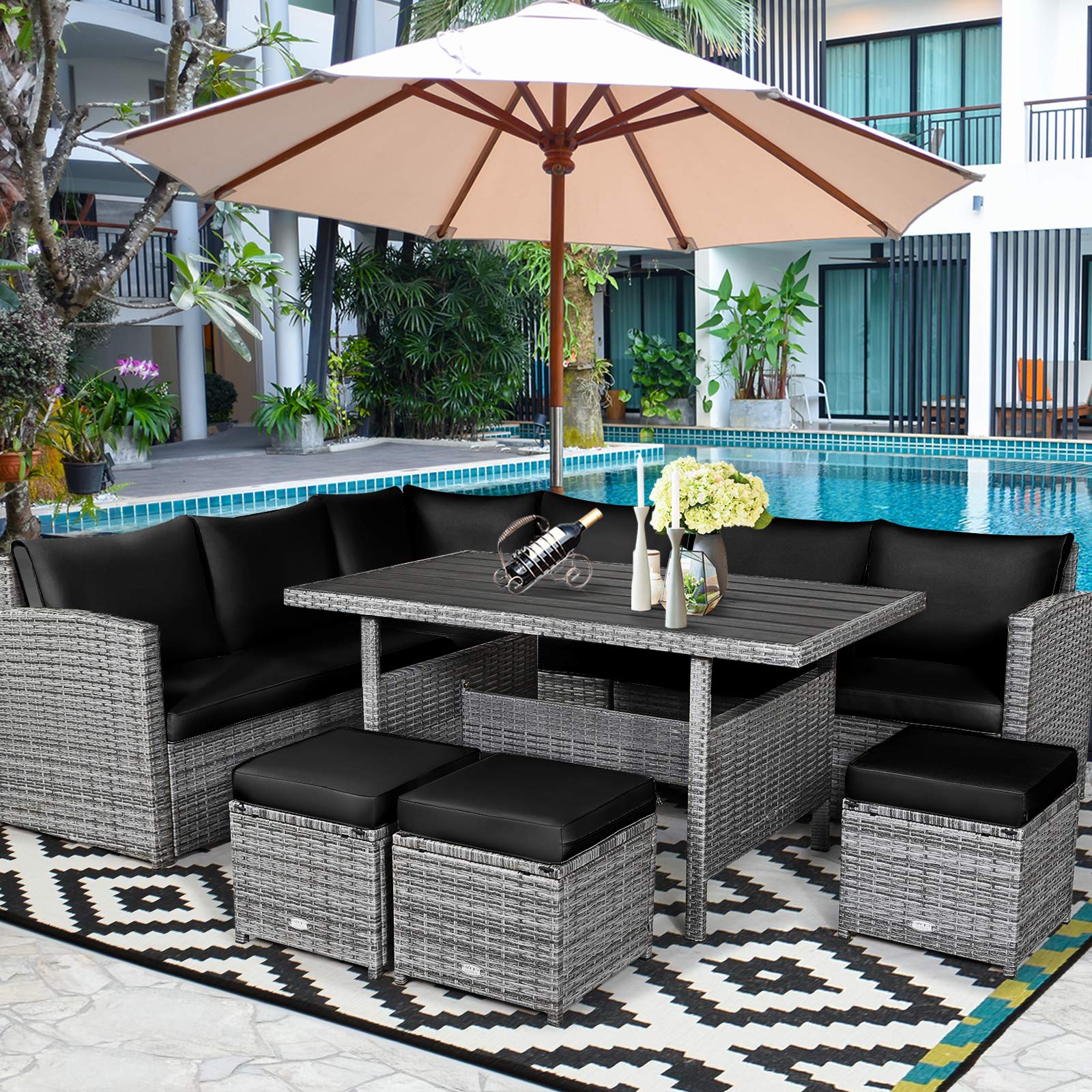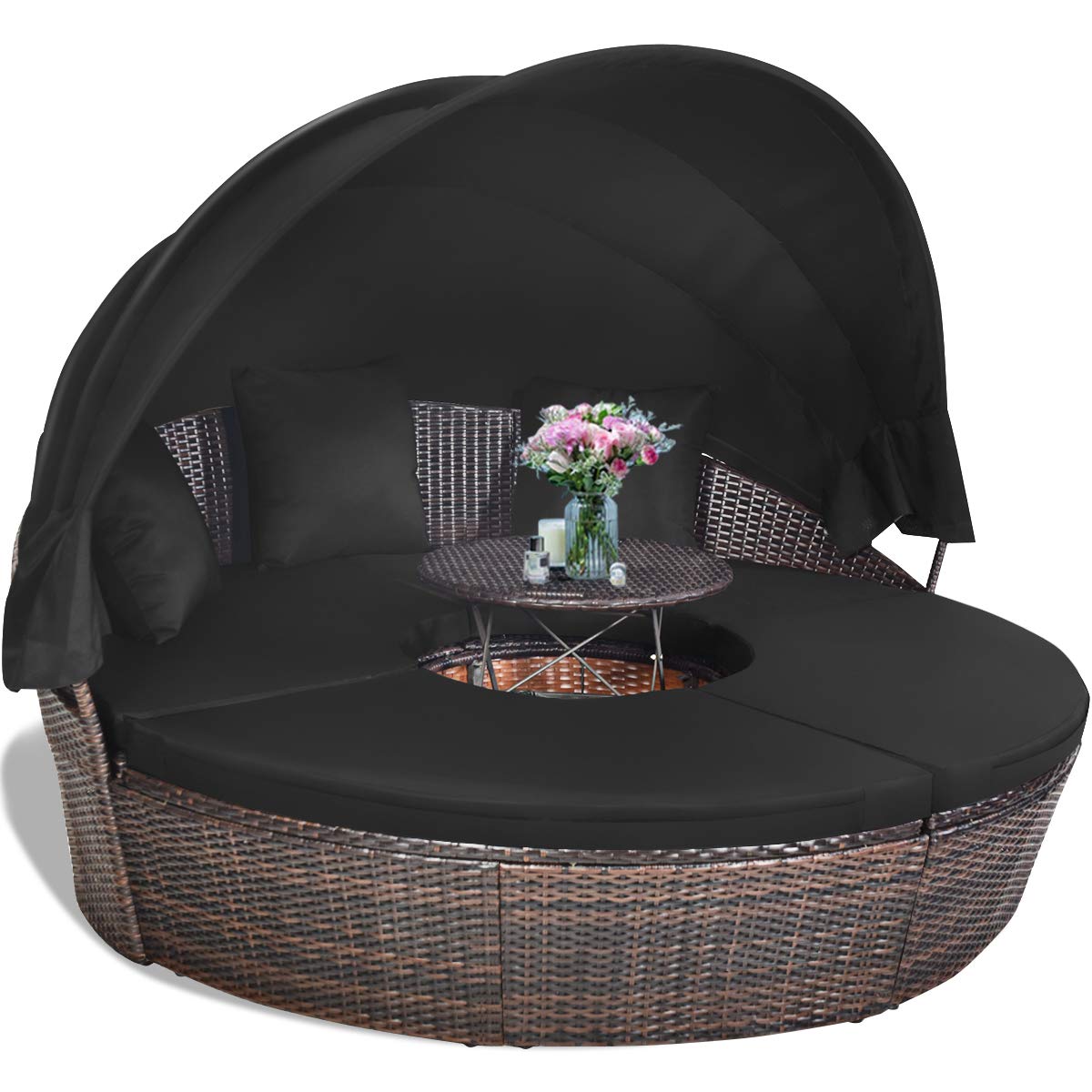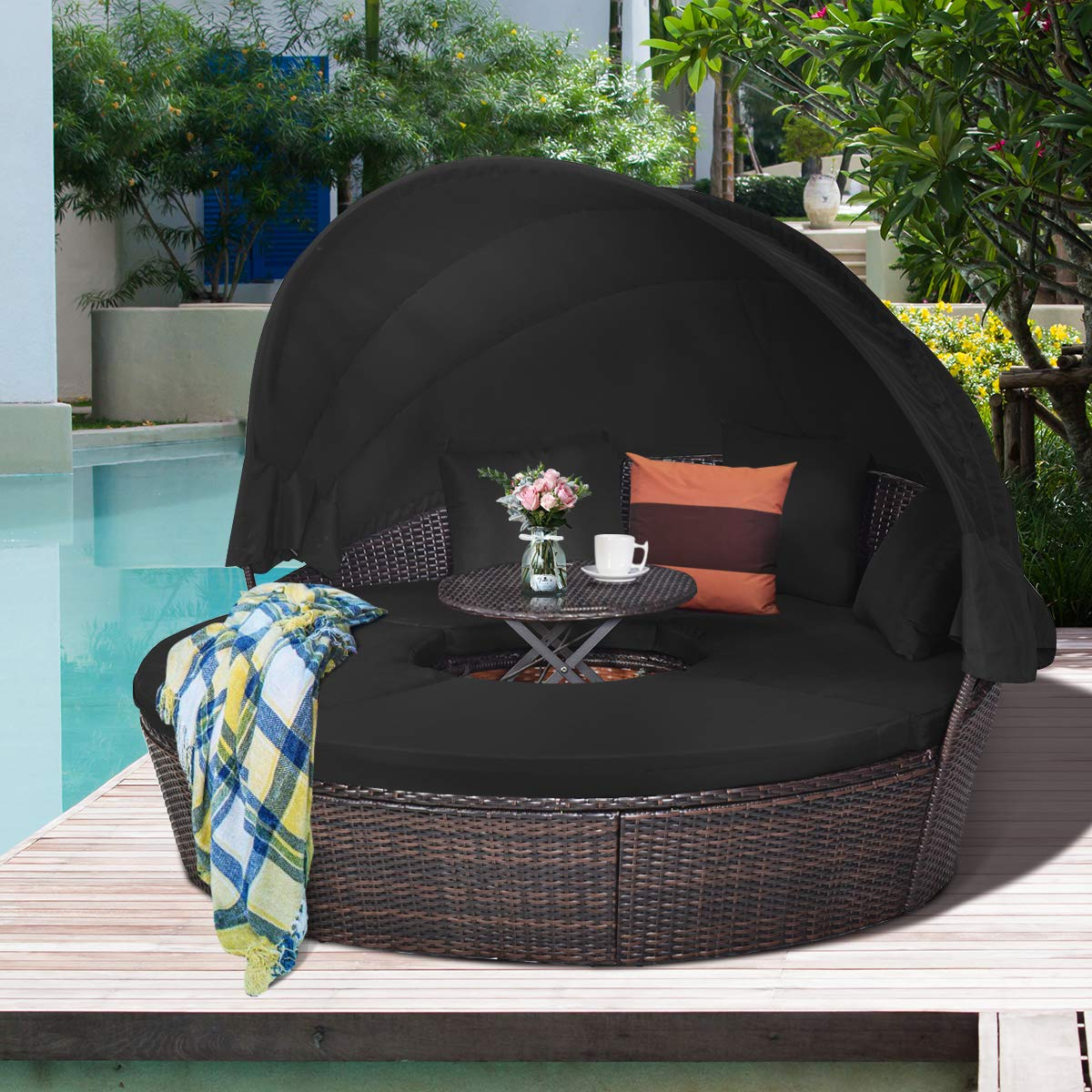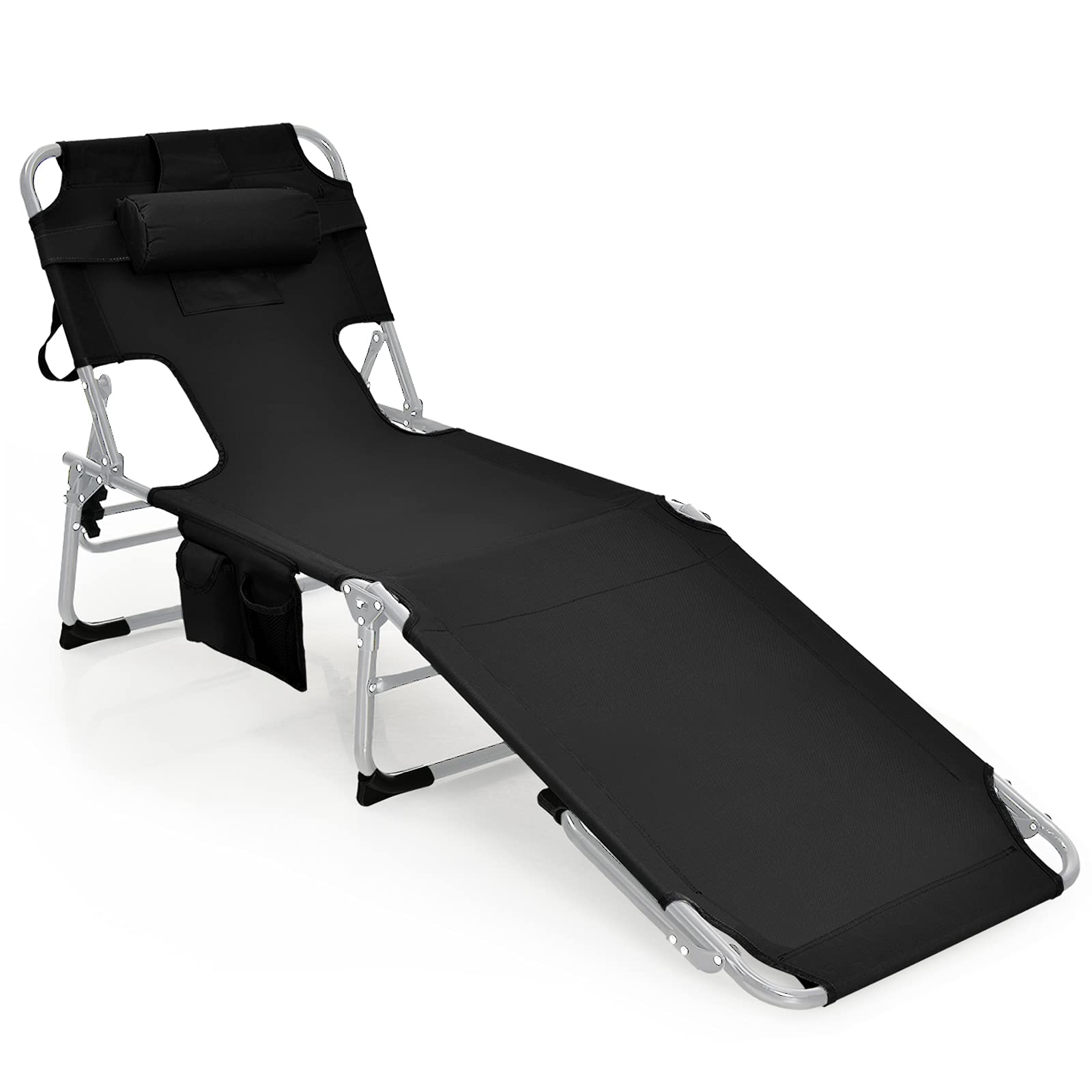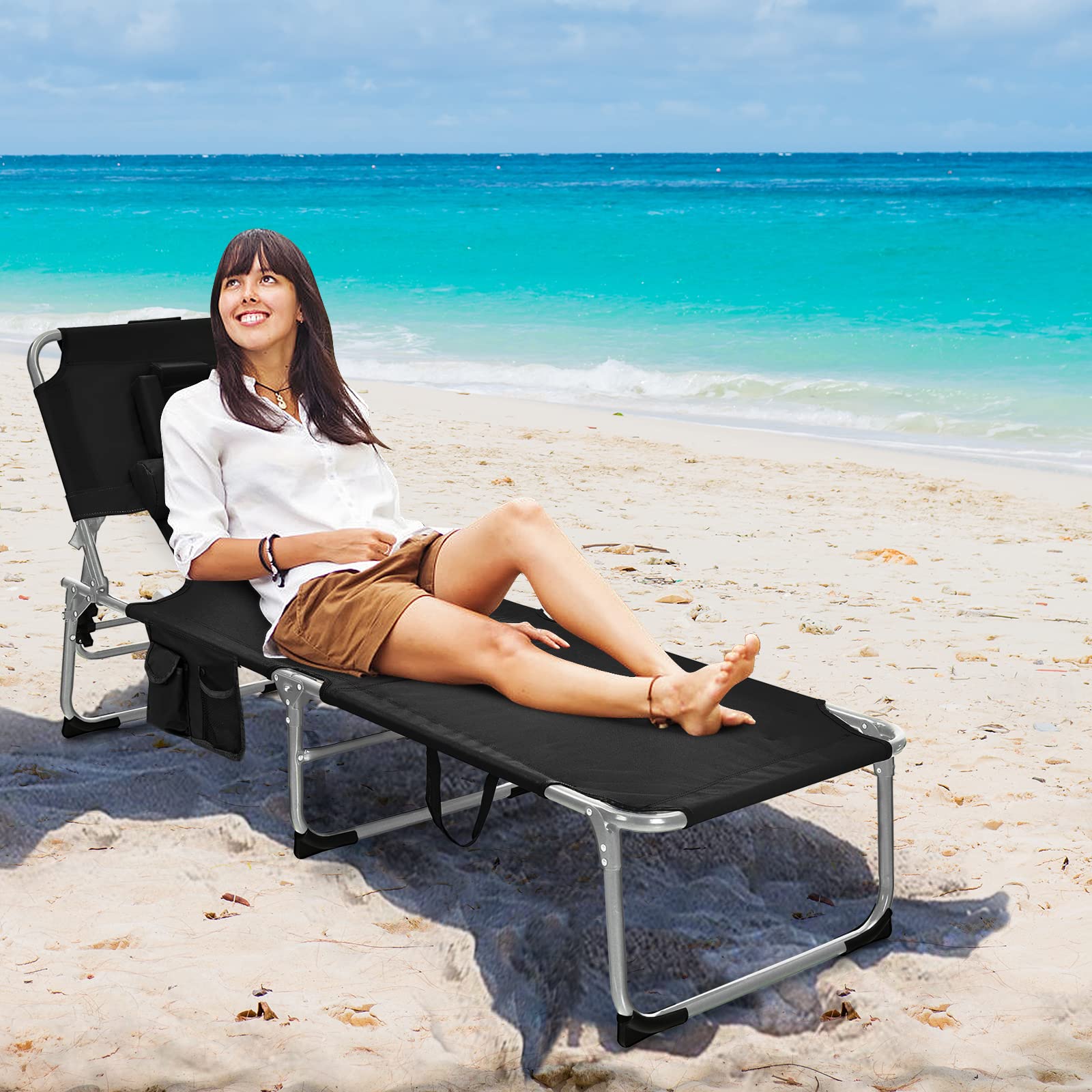Inside this Article:
How Weather & Climate Affect Outdoor Furniture
All weather outdoor furniture is a long-term investment. Its durability depends on how well it adapts to different climates and weather. The United States has many different climates and weather conditions. These include humid coastal areas, deserts, snowy winters, and places with storms.
Each of these weather patterns can affect outdoor furniture in different ways. This can change how long it lasts, how it looks, and how much care it needs. Knowing these environmental factors can help homeowners pick the best materials and designs. This way, their outdoor spaces stay stylish and functional all year.
1. Humid Continental Climate
Regions:
Midwest & Northeast U.S. (Illinois, Ohio, New York, Pennsylvania, Michigan, Wisconsin, etc.)
Northern states with four distinct seasons
Climate Characteristics:
- Hot, humid summers and cold, snowy winters
- Frequent temperature fluctuations
- Moderate to high rainfall throughout the year
Effects on Outdoor Furniture:
- Wood furniture may expand and contract because of temperature changes, causing cracks or warping.
- Patio furniture metal is at risk of rusting because of moisture from rain and snow.
- Fabric cushions can develop mold and mildew from seasonal humidity.
Best Outdoor Furniture Materials:
- Teak, Cedar, or Eucalyptus: Naturally weather-resistant and durable in temperature shifts.
- Powder-Coated Aluminum: Won’t rust in humid conditions.
- HDPE (High-Density Polyethylene) Wicker: Synthetic and resistant to moisture.
- Sunbrella or Olefin Outdoor Fabric: Mold and mildew-resistant for cushions.
Maintenance Tips:
- Apply Sunbrella outdoor furniture sealant to wooden furniture yearly.
- Store cushions indoors when not in use.
- Use breathable outdoor furniture covers to prevent trapped moisture.
2. Humid Subtropical Climate
Regions:
Southeastern U.S. (Florida, Georgia, Alabama, South Carolina, North Carolina, Texas)
Climate Characteristics:
- Hot, humid summers and mild winters
- Heavy rainfall and thunderstorms
- High humidity levels year-round
Effects on Outdoor Furniture:
- Wood furniture can swell and rot from constant moisture.
- Metal patio tables may corrode because of humidity.
- Fabric cushions are prone to mold and mildew growth.
Best Outdoor Furniture Materials:
- Synthetic Wicker & HDPE Lumber: Waterproof and resistant to warping.
- Marine-Grade Aluminum or Stainless Steel: Rust-resistant options.
- Treated Teak or Eucalyptus: Resistant to high humidity but needs oiling.
- Waterproof Cushion Fabrics (Olefin, Sunbrella): Prevents mildew buildup.
Maintenance Tips:
- Wipe down furniture weekly to remove moisture buildup.
- Store cushions indoors to prevent mold growth.
- Use anti-rust spray on metal surfaces.
3. Mediterranean Climate
Regions:
West Coast (California)
Climate Characteristics:
- Hot, dry summers and mild, wet winters
- Moderate humidity levels
- Consistent year-round temperatures
Effects on Outdoor Furniture:
- Sun exposure causes wood to fade and crack.
- Fabric cushions may discolor because of UV rays.
- Coastal winds may affect lightweight furniture.
Best Outdoor Furniture Materials:
- Teak, Cedar, or Eucalyptus: Naturally UV-resistant and durable.
- Aluminum or Wrought Iron: Resistant to coastal air, but should be powder-coated.
- Sunbrella Fabrics: UV-resistant and fade-proof cushions.
- Concrete & Stone Furniture: Sturdy enough for coastal winds.
Maintenance Tips:
- Apply UV-protectant sealant to wood furniture yearly.
- Use umbrellas or pergolas for shade.
- Store lightweight furniture during strong winds.
4. Desert & Arid Climate
Regions:
Southwest U.S. (Arizona, Nevada, Utah, parts of California, New Mexico, Texas)
Climate Characteristics:
- Extremely hot and dry summers
- Minimal rainfall
- Intense sun exposure year-round
Effects on Outdoor Furniture:
- Plastic furniture can become brittle and crack.
- Wood furniture dries out and develops splits.
- Metal furniture gets extremely hot to the touch.
- Fabric cushions may fade quickly because of intense UV rays.
Best Outdoor Furniture Materials:
- HDPE & Resin Wicker: Heat-resistant and won’t crack.
- Powder-Coated Aluminum: Lightweight and rust-resistant.
- Teak or Ipe Wood: Naturally contains oils that prevent drying.
- Sunbrella or Solution-Dyed Acrylic Fabrics: UV-resistant and fade-proof.
Maintenance Tips:
- Oiling wood furniture prevents drying and cracking.
- Use light-colored cushions to reflect heat.
- Place furniture under shade structures.
5. Marine West Coast Climate
Regions:
Pacific Northwest (Washington, Oregon, Northern California)
Climate Characteristics:
- Mild temperatures year-round
- High humidity and frequent rain
- Cloudy conditions with occasional storms
Effects on Outdoor Furniture:
- Wood furniture can develop mold or moss.
- Metal furniture is highly prone to rust.
- Fabric cushions stay damp, leading to mildew growth.
Best Outdoor Furniture Materials:
- Synthetic Resin Wicker & HDPE: Waterproof and mold-resistant.
- Marine-Grade Stainless Steel & Aluminum: Won’t rust easily.
- Teak & Eucalyptus: Naturally moisture-resistant, but requires maintenance.
- Quick-Dry Foam & Sunbrella Fabrics: Ideal for wet climates.
Maintenance Tips:
- Apply mildew-resistant sealants on wood.
- Store cushions indoors when not in use.
- Wipe down furniture after rain to prevent mold.
6. Subarctic & Cold Climate
Regions:
Alaska, Northern U.S. (Montana, Minnesota, North Dakota, Maine)
Climate Characteristics:
- Long, harsh winters with heavy snowfall
- Short, cool summers
- Strong winds and icy conditions
Effects on Outdoor Furniture:
- Plastic furniture becomes brittle and cracks.
- Metal furniture may freeze and develop weak joints.
- Wood furniture can crack because of repeated freezing and thawing.
Best Outdoor Furniture Materials:
- Teak, Cedar, or Eucalyptus: Withstands freezing temperatures.
- Aluminum & Powder-Coated Steel: Won’t crack in cold weather.
- HDPE Lumber: Resists ice damage.
- Wool or Weatherproof Cushions: Provides insulation.
Maintenance Tips:
- Store furniture indoors or in a shed during winter.
- Use padded covers to protect from ice buildup.
- Remove snow accumulation to prevent structural damage.
7. Tropical Climate
Regions:
Hawaii, South Florida, Puerto Rico
Climate Characteristics:
- Hot, humid weather year-round
- Frequent heavy rainfall
- High salt exposure in coastal areas
Effects on Outdoor Furniture:
- Wood furniture may swell and rot.
- Metal furniture can corrode because of salt air.
- Fabric cushions are prone to mold.
Best Outdoor Furniture Materials:
- Marine-Grade Polymer & Resin Wicker: Fully waterproof.
- Stainless Steel & Powder-Coated Aluminum: Salt-resistant.
- Teak & Ipe Wood: Naturally mold-resistant.
- Quick-Dry Fabrics: Prevents moisture retention.
Maintenance Tips:
- Rinse furniture weekly to remove salt buildup.
- Use anti-corrosion spray on metal surfaces.
- Store cushions indoors when not in use.
Choosing the best material for outdoor furniture is not just about looks. Also, picking materials that can handle your local weather is important. When facing bright sunlight, heavy rain, cold, or strong winds, smart choices can help your contemporary patio furniture last longer. Wicker furniture also remains the outdoor living space in good condition.
By using weather-resistant materials and proper care techniques, you can make a comfortable outdoor space. This space will stay inviting for years.
If you want to find different types of furniture material for 3 piece patio set or other small balcony furniture, check the related articles.

